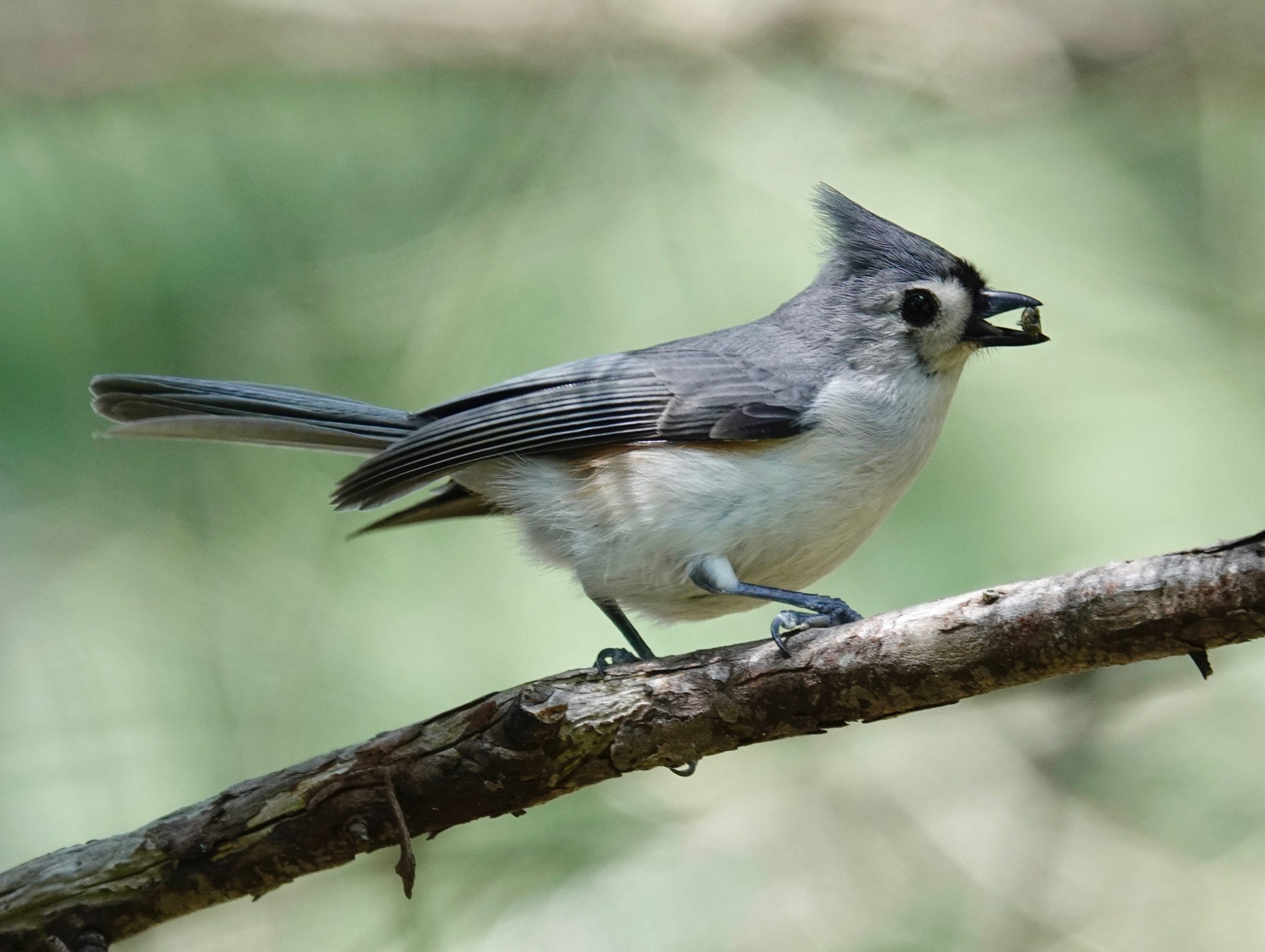Hey there, bird enthusiasts! Get ready to dive into the adorable world of titmice—those tiny bundles of charm that will steal your heart with their playful antics and unique personalities.
A Visual Journey: Exploring Titmouse Species
Titmouse pictures? Get ready for cuteness overload! These little birds are like tiny puffballs with personality plus. But beyond the ubiquitous Tufted Titmouse, with its surprised expression and cool gray crest, did you know there are actually several different types of titmice hopping around North America?
For instance, the Oak Titmouse rocks a black crest and a bright yellow belly, while the Juniper Titmouse is a master of camouflage, blending seamlessly into the desert landscape. Each species has its own unique look, making titmouse spotting even more fun!
These birds aren’t just cute—they’re crazy athletic, too! Watching them flit through the trees is like watching tiny feathered acrobats. They hang upside down, dart between branches, and make it look effortless. And their favorite snack? Sunflower seeds! Put out a feeder filled with those, and you’ll have a front-row seat to their acrobatic dining experience.
Capturing the Titmouse on Camera
Want amazing titmouse photos? Capturing their energy can be tricky, but it’s doable. You’ll need a fast shutter speed to freeze their quick movements. Good lighting is also key to showcase the details in their feathers. Don’t be afraid to experiment with different angles and backgrounds to get that perfect shot.
More Than Just a Pretty Face
Sure, titmice are ridiculously photogenic, but they’re also pretty chatty. Their calls, often described as a cheerful “peter-peter-peter,” fill the forest with their constant chatter.
Creating a Haven for Titmice
Like all wildlife, titmice need our help to thrive. We can all do our part by creating bird-friendly spaces in our yards, planting native trees and shrubs, and keeping our cats indoors. So, the next time you see a titmouse picture, take a moment to appreciate these amazing little birds. They’re a reminder that sometimes the most extraordinary creatures come in the smallest packages.
Why is the bird called a titmouse?
It’s a pretty funny name for a bird, right? Sounds a bit like someone mashed up a tiny horse and a mouse! But don’t worry, these little birds aren’t some strange hybrid.
The name “titmouse” is a throwback to Old English. “Tit” was used to describe something small, and “mase” simply meant “bird.” So, “titmase” essentially meant “small bird”—fitting, considering their petite size.
Over time, “titmase” morphed into “titmouse,” probably because people noticed how these birds flit and hop around, almost like little feathered mice searching for a snack.
While their name might make you think of rodents, titmice are all bird. These little dynamos are known for their energetic personalities and catchy songs. And while they might have a rounded shape that could be mistaken for a fluffy mouse from a distance, a closer look reveals their true avian nature.
The Tufted Titmouse, for instance, sports a cool mohawk-like crest that no self-respecting mouse would be caught dead with! Plus, they have strong beaks for snapping up seeds and insects – a far cry from their namesake mammal.
The titmouse family, scientifically known as Paridae, is huge! We’re talking over 55 different species scattered all over the globe, from the Americas to Europe, Asia, and even Africa. And just like any big family, they come in all sorts of shapes, sizes, and colors. Some are decked out in vibrant hues, while others prefer a more understated palette. And their songs? Let’s just say each species has its own unique tune—it’s like a global bird chorus out there!
So, the next time you hear the name “titmouse,” remember that it’s not about some weird mouse-bird creature. It’s about a fascinating group of energetic little songbirds with an ancient name and a story that spans the globe.
How do you identify a titmouse?
Think you’ve spotted a titmouse? Here’s how to tell for sure:
Size and Shape
Titmice are small—think smaller than a sparrow, more like 4-5 inches from beak to tail. They have a compact, almost chubby look, with a short tail that adds to their roundness. And to top it off, they have long feathers on their heads that they can fluff up like a little crest.
Colors
While some titmice sport the classic gray, brown, and black, don’t be fooled—some species like to jazz things up with splashes of yellow or orange.
Beak
One of the easiest ways to identify a titmouse is by its beak. It’s short, stout, and strong—perfect for cracking open seeds and crunching on insects.
Movement
If you’re seeing a bird that can’t seem to stay still, constantly flitting between branches and hopping around, chances are it could be a titmouse. These guys are little balls of energy, always busy searching for food or chattering with their buddies.
Vocalizations
Titmice are quite the singers! Their calls range, but the most recognizable is a high-pitched “peter-peter-peter” sound. It’s pretty distinctive and once you hear it, you won’t forget it.
Habitat
You can find titmice in a variety of places, including forests, woodlands, parks, gardens, and even your backyard if you have what they’re looking for.
Attracting Titmice to Your Yard
Want to increase your chances of spotting a titmouse? Provide them with food (sunflower seeds, peanuts, and suet), water (a simple birdbath will do), and shelter (trees and shrubs offer protection and potential nesting sites).
A Final Note on Titmice
From their energetic personalities to their unique looks, titmice are a joy to watch and listen to. Keep your eyes peeled and your ears open next time you’re out and about, you never know when you might spot one!
What is titmouse in english?
The word “titmouse” is a fascinating blend of old and new meanings! As mentioned earlier, it comes from the Old English words “tit,” meaning small, and “mase,” meaning bird.
While the “mouse” part might make you think of those scurrying rodents, it likely came about because of how these birds move—darting and flitting through branches with impressive agility, kind of like a feathered mouse navigating a treetop maze!
Over time, the “mouse” part lost its descriptive flair and became just a part of the name. But the “tit” part stuck around, probably because it perfectly captures their diminutive size.
The titmouse’s name is a glimpse into the evolution of language, demonstrating how words can shift in meaning and association over time.
To know more about the tinglar turtle, click here.
For more interesting details on a tortoise’s average lifespan, click here.
- Unveiling the Enigma: Mansoureh Khojasteh Bagherzadeh’s Public Appearances & Private Life in Iran - July 18, 2025
- Unveiling the Mystery: Mansoureh Khojasteh Bagherzadeh’s Husband: A Rare Glimpse into a Private Life - July 18, 2025
- Unveiling Masoud Khamenei’s Mother: Power, Influence, and Iran’s Future - July 18, 2025

















2 thoughts on “Adorable Titmouse Bird Pictures: A Visual Guide to Their Species and Charm”
Comments are closed.